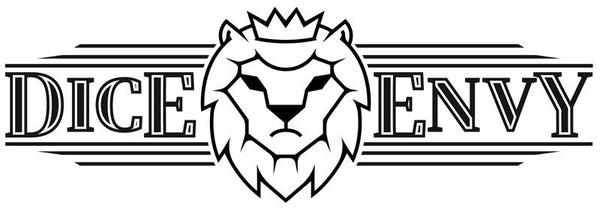A D&D character is defined by 4 things: personality traits, ideals, bonds, and flaws. When you set out on your campaign, you’d be wise to follow these standards. Otherwise, you may end up like the last season of Game of Thrones. When you put thought into these details, your character gets unique D&D ideals and bonds that set the stage for limitless opportunities when gameplay starts.

Personality Traits
D&D personality traits are unique and quirky traits that define how your character behaves day to day. Common examples are Type-A/hyper-organized (Monica Geller, Amy Santiago, Leslie Knope), Deadpan/monotone (Drax the Destroyer, Ron Swanson), and Goofball (Andy Dwyer, Phillip J. Fry, Homer Simpson). They can be as minor as “I love a good cup of tea” or enough to define your entire character. Combining several of them creates a multidimensional character with different facets to their personality.
Alternatives
You can also choose one or two personality traits that tie into a character’s backstory and offer a general impression of how they will act. *Touches necklace* My mother used to choose personality traits that tied into a character’s backstory…
While this doesn’t have the fine granularity of the previously mentioned D&D personality traits, it gives an overarching impression of how a character would act in many different situations.
Ideals
D&D ideals are beliefs that drive a character. They can include ideas like Generosity or Greed, Respect or Might, Tradition or Freedom. Common archetypes are the noble warrior (Aragorn, Steve Rogers, She-ra), loose cannon (Jinx, Harley Quinn), and morally grey (Geralt of Rivia, Sabrina Spellman). These ideals help define character alignment, which defines how other PCs and NPCs view the character. The noble warrior, for instance, will often be considered lawful good. Developing ideals helps define what a character deeply believes in and shapes their history as well as how they roleplay situations that threaten various beliefs. These ideals can also be reflected in D&D characters’ personality traits.

Bonds
D&D bonds are things, people, or places that a character cares deeply about and would fight to protect. A bard may be a specific magical instrument that was stolen from you long ago that you now seek to find and reclaim. A young monk could be bonded to her master, sworn to protect him and the monastery at all costs. The leader of a gang may be so committed to having “a plan” that he jeopardizes the gang multiple times to sail to Tahiti.
Built in Real-Time
While many bonds exist in character creation, they can also be gained during gameplay and showed off in your D&D personality traits. Evelyn and Paultin from Dice, Camera, Action developed a bond with a living puppet construct during their time in Barovia. As the adventures continued, they experienced various ups and downs together, finally coming to think of their puppet, Simon, as their son. This bond has led to many emotional and powerful roleplaying experiences facilitated by their DM, Chris Perkins. When combined with your D&D ideals and personality traits, you get a more fully realized game. Forget virtual reality, this is what it feels like to really live inside a game.
Flaws
Flaws are weaknesses in a person’s character that can lead them astray. Common vices, such as lust, gluttony, pride, sloth, greedy, envy, and wrath are common general flaws. But, you can get as specific as you like, such as Thanos’s near-sidedness at wiping out half of all living things, or Boromir’s insatiable desire for the ring to save Gondor. The more specific, the more unique roleplaying opportunities you get.\

Intersections
Flaws can also be overindulgences of D&D personality traits, bonds, and ideals. Wanda Maximoff’s bond with her family led her to unintentionally mind-control an entire town. Her attachment blinded her to the side effects, and only set her up for more tragedy down the road. A Type-A personality often needs things to be orderly and can’t function otherwise.
These aren’t inherently bad, either. Instead, they offer increased depth and realism to your characters. Real people are flawed, they aren’t made up of perfect fictional ideals. When characters face their flaws head-on and choose instead to do what is right, their choices become more deeply meaningful and powerful. Just don’t go too far. You don’t want to end up like the Gang from It’s Always Sunny.
Character Props
Beyond D&D personality traits and background, additional props may be used for each character. This helps other players identify them more easily and helps you roleplay more effectively. A circular vibranium shield is a good indicator of who that character is. Or perhaps two swords, one silver, and one metal, for different types of enemies. Maybe your character has a child that only shows up when it’s relevant to the plot, because of reasons.
Getting Literal
You can take props to a literal level with a unique Dungeons & Dragons miniature for each character, including premade minis from retailers like Reaper Miniatures or Avatars of War, or designing a unique miniature from a series such as Hero Forge. That way, you can help other players identify your character and give a first impression of your D&D personality traits, ideals, and bonds. Additional props like Campaign Coins can give flair and memorability to unique characters.

Special Dice
Take it even further with a unique dice set. With plenty of different options such as metal dice or unique infinity d4s, you can get a diverse set of advantages depending on your character. Mario Party does it, and everyone loves Mario Party. For your campaign, a warlock that worships Tiamat might use a fiery D&D polyhedral dice set to represent the burning flames that he burns his enemies with, channeled from the power of his patron.
How to RP
Once you’ve fleshed out a character’s D&D personality traits, ideals, bonds, and flaws at character creation, you’re ready to begin roleplaying. Roleplaying in a tabletop role-playing game can be a daunting task, especially for new players. Having a well-established personality written out during character creation makes roleplaying during the game much easier. Don’t be the guy that reads off notecards the whole time, though. Nobody likes that guy.

Proper Personality Notes
Create notes of special traits the smart way by placing them on your character sheet. You can add notes of special NPCs and locations you visit, and how your character feels about them. Skim the notes quickly each session, and you’ll be good to go. This helps develop your D&D personality traits and reminds you of all your great adventures.
Bring Depth to Your Game
In summary, developing a well-rounded character during creation, with all the proper aspects and facets, while difficult to do, set the stage for a great roleplaying game. Keep notes of your adventures to build on your development. But don’t take it too far. You don’t want to be the next George R.R. Martin here. Give it your best, well-rounded shot for an evolving, multidimensional character and plenty of opportunities for memorable roleplaying experiences. Get some props like figurines and dice, and get ready to watch your campaigns triple in fun.
Emily Smith is a D&D Writer, TTRPG Blogger, and DMs Guild Content Creator based in Los Angeles, CA. She is a regular DM and player for Adventurer's League, the official organized play system for D&D 5e. In her free time, she enjoys playing League of Legends, cooking, and cat herding.

4 comments
Hehe.maybe your character has a child that only shows up when it’s relevant to the plot because reasons.hehe good addition there
Thank you so much for making this, I’m fairly new to D&D and have always struggled to develop and sustain a character. I spend roughly 3-5 hours making a single character but with your advice, I’ve boiled it down to under one hour.
Hey! I thought I’d drop a thank you for this article. Ive been playing D&D with a group of high school friends for about 3 years now. This article was outstandingly helpful for flushing out the details for my characters.
Thank you for this. I’m a new player and I’ve been working on creating my own character. This helped a lot. My characters name is “Leather face” he is a Dragon born, golden Dragon. This is his back story I wrote on hlthe notes of the sheet.
given the code name “leather face” the bard of great fancies has roamed the world gathering info to protect his brothers and sisters of his tribe. although he loves his homeland he has gone off track and has embarked on some adventurous missions as guild spy master for his ability to get results dispite how terrible he is at disguising himself. basicly he’s a psycho who thinks he is fooling everyone as a bard he believes that he is actually fooling people but due to his size and odd nature most leave him be and decide it’s best this way. although he is good at collecting potions and spells since he thinks it will get him back to his home world. tasked with uncovering the strange “soft skinned one” that freed the immortal Dragon who was imprisoned in the temple of the dragonborns tribe that have held the immortal for over a 1000 years isolated from the rest of the world to keep their world from being oppressed once again by the immortal and his kind. the immortal is not at full strength and great mounting fear stretching across his land that the escape of the immortal will spell doom and enslavement of the dragon born once again. do to the severity of this task and the many who died of his tribe inculding his mother the “Death cry” aka leather face hides his pain with song and smile. "